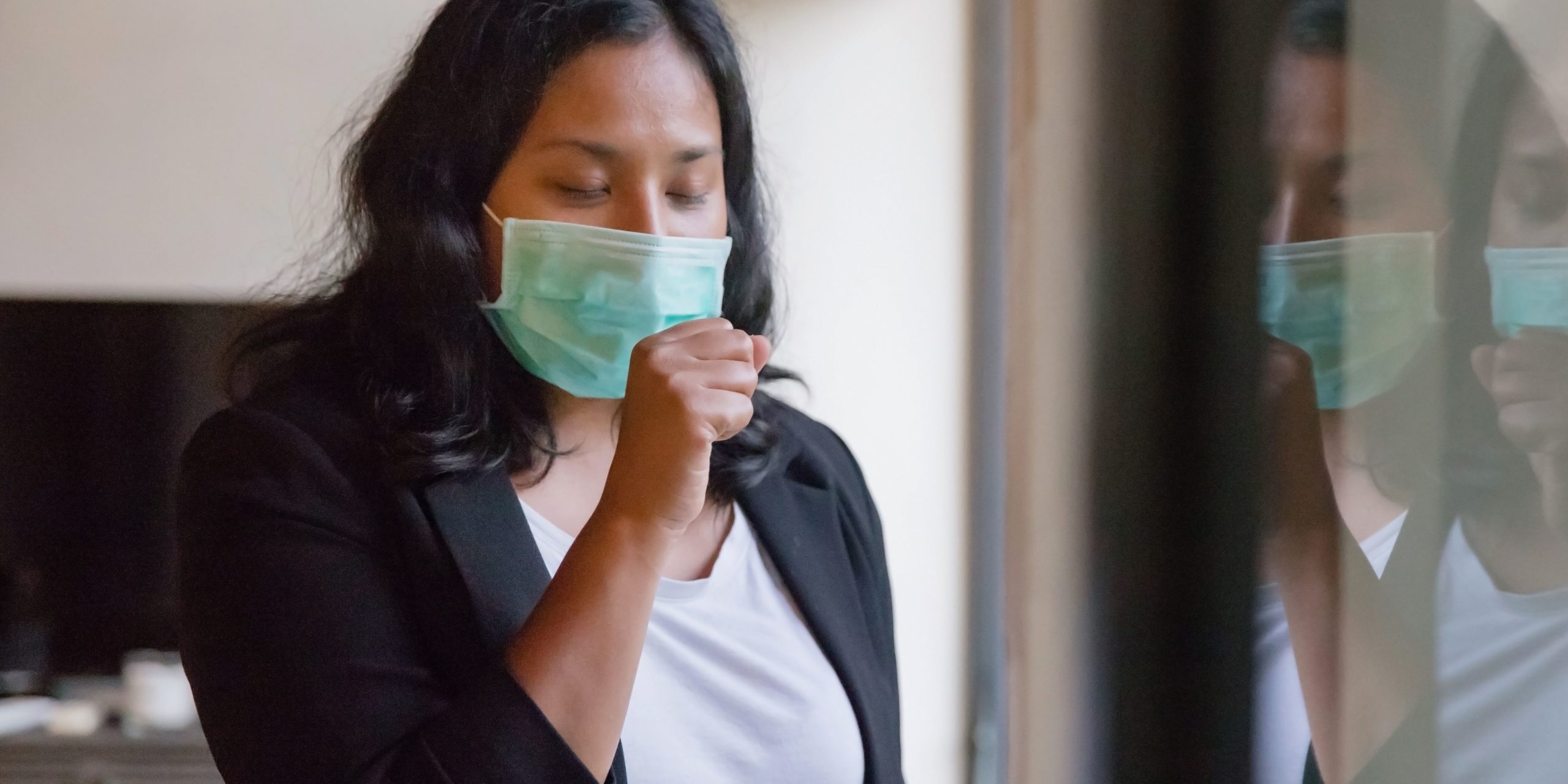As the coronavirus pandemic continues, we’re learning more about how different groups experience COVID-19. Everyone is talking about mild, moderate, and severe cases and critical cases. What does this mean?
There are, as yet, no clear guides for patients to tell them what doctors mean by mild, moderate, or severe COVID-19. Some guidance on classifying illness is appearing in research papers and epidemiological reports, but it’s not very specific. For example, the broad definition of moderate disease seems to be that it’s worse than the mild disease but not severe.
How have people been ‘classifying’ COVID-19?
You will have heard in public health announcements and in the media that some people have had mild COVID-19 infections, and others moderate, severe, or critical.
Yet, when you look up the symptoms, you are told to expect a cough, a temperature, and a loss of (or change to) your sense of smell and/or taste. How bad a cough is a mild case? How much of a temperature is severe?
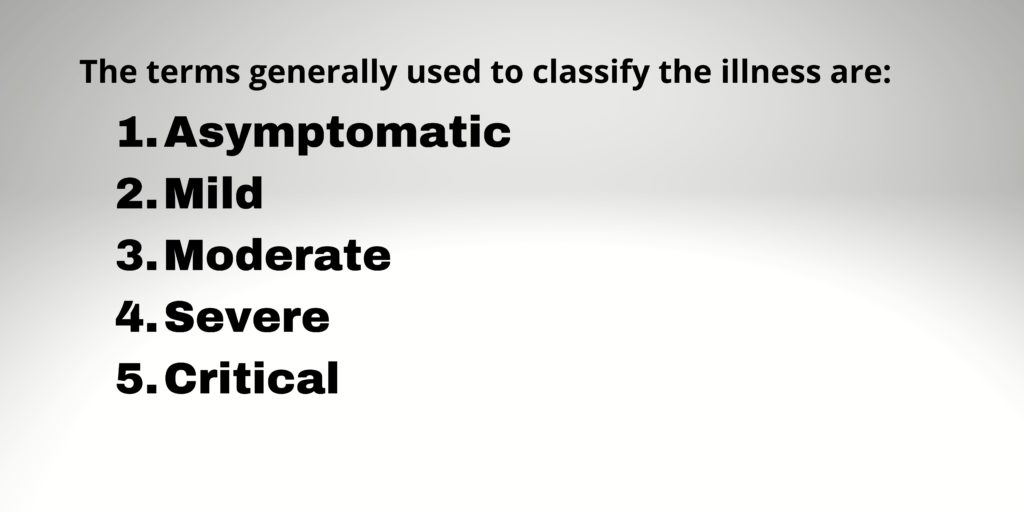
These classifications are consistent with published descriptions so far. If formal, agreed to guidance on what we call mild, moderate, and severe cases are published, these may differ slightly. For now, this seems to fit the way the terms are being used.
Each of these ‘levels’ of illness is considerably less common than the previous one (so severe is less common than moderate, which is less common than mild, and so on).
Who gets what?
Most people who are young and healthy are likely to be in group one or two (asymptomatic or mild). However, some young healthy people have become very unwell and some have died. In percentage terms, this appears to be very low, but the chance is not zero.
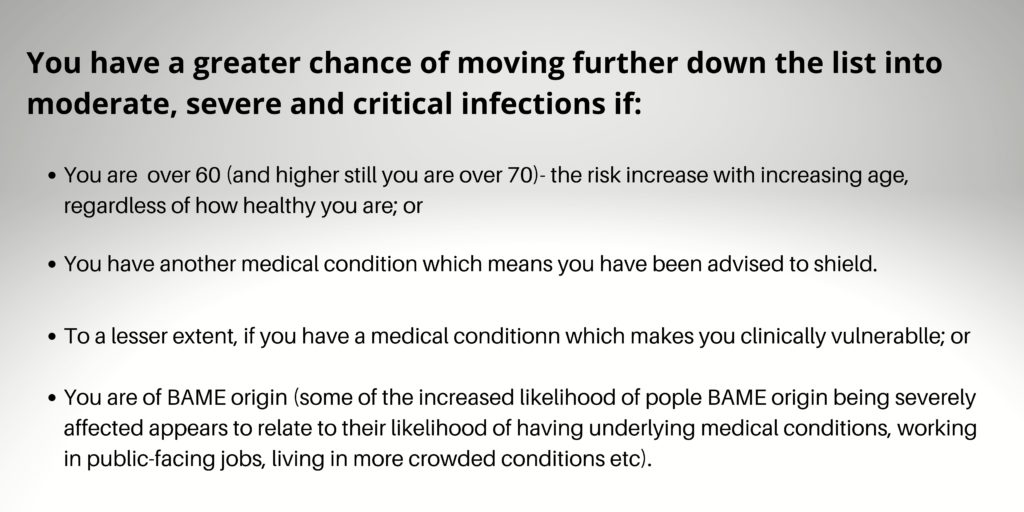
Even in the over-80s group, very significantly more people will have mild or moderate disease than the severe disease.
Not an exact science
You may well not fit anyone’s classification exactly. You may be between two. You may move from mild to moderate symptoms, then back to mild. You may have symptoms from more than one group. Illness is like that.
When huge numbers of people are affected, they will not all fit perfectly into simple group classifications of mild, moderate, or severe. But if your symptoms are predominantly of mild disease with, say, one or two moderate features, you may be ‘mild to moderate.
If your symptoms are predominantly moderate, but you are clearly getting worse and start to get symptoms that seem to fit ‘severe’, do not wait to seek urgent help until you have more of the severe symptoms.
In each category, most people will not progress to the next. You are more likely to progress if you are vulnerable, particularly if you are over 60. If you are in a very vulnerable group and you think you have even mild COVID-19, you should seek advice.
How bad is my COVID-19?
Asymptomatic COVID-19
The government guidelines suggest that 1 in 3 people who have COVID-19 have no symptoms. It seems that this occurs more often in the healthiest and the younger age groups, including most children.
Antibody testing helps us to understand how many people have had coronavirus unknowingly, with or without symptoms. At the moment, whether you can book antibody testing depends on your job and where you live. In most situations, it is not available on the NHS.
Being asymptomatic means that you have no symptoms. If you live in a house with people with a COVID-19 infection and you have no symptoms, you may be an asymptomatic case. However, recent research suggests that the proportion of people who remain completely asymptomatic is lower than first thought, at about 1 in 5 people.
And while people with the asymptomatic infection are less likely than those with symptoms to spread the disease, the risk is by no means non-existent. This is why self-isolating for the whole 10-day period from your last contact with someone with a known infection is so important.
Remember, this entire pandemic probably started with one case. Don’t be a spreader.
Mild COVID-19
The virus affects mainly your upper respiratory tract, primarily the large airways. Key symptoms are temperature, a new, continuous cough, and/or a loss of your sense of smell or taste.
Patients with the mild illness have flu-like symptoms. These may include a dry cough and mild fever, but the fever may not reach 37.8°C, and there may sometimes be little or even no cough. Patients might notice a feeling of being a bit more breathless than normal on exercise, but they are not out of breath on normal household activity.
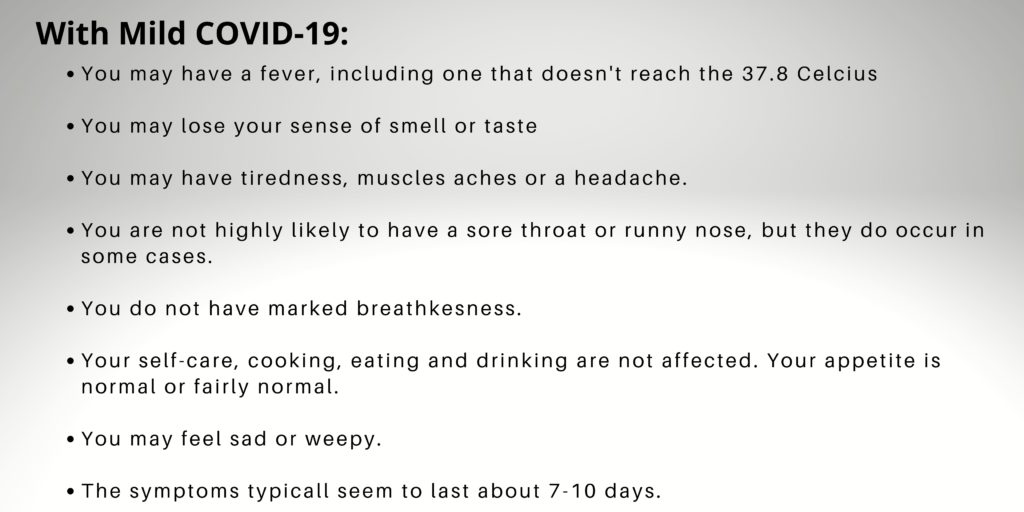
Most (81%) of symptomatic COVID-19 cases are mild and remain mild in severity. However, patients with mild disease can deteriorate, sometimes quickly, and this is more likely in at-risk groups.
In part two of this feature series, we will look into moderate, severe, and critical infections.
When to seek help
If you think you may have COVID-19 or that you have been exposed to the virus, you should stay at home and self-isolate. Currently, only people with symptoms or in certain other limited circumstances are eligible for a COVID-19 test, but if these apply to you, book a test.
The vast majority of people with mild or asymptomatic infections do not need to seek medical attention and can treat their symptoms at home. There are some circumstances in which you should speak with a clinician about your symptoms. However, do not simply show up at your GP surgery or a pharmacy as you risk spreading the virus to others. Instead, call first and ask for advice.
If you are in a vulnerable group, seek advice. This includes all people who are being ‘shielded’ for their own protection.
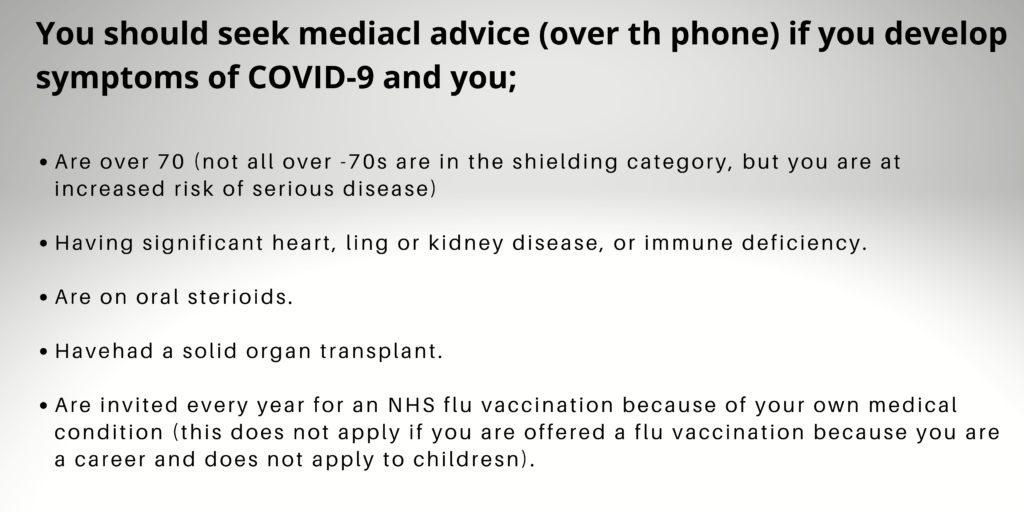
If you have symptoms that are worsening, seek advice. This is particularly true if you have any of the severe features. People with COVID-19, particularly those in risk groups, can deteriorate from mild to moderate to severe. Likewise, if you are afraid, please seek advice. That is what health professionals are there for.
You may have to call NHS 111 (or the relevant number in your region) and wait to speak with a nurse. You can also use NHS 111’s online tool to find out what to do next if you think you have COVID-19. In an emergency, call 999 and ask for an ambulance. Inform the call handler that you think you have coronavirus.
